
Nuphar advena subsp. advena
(Spatterdock)
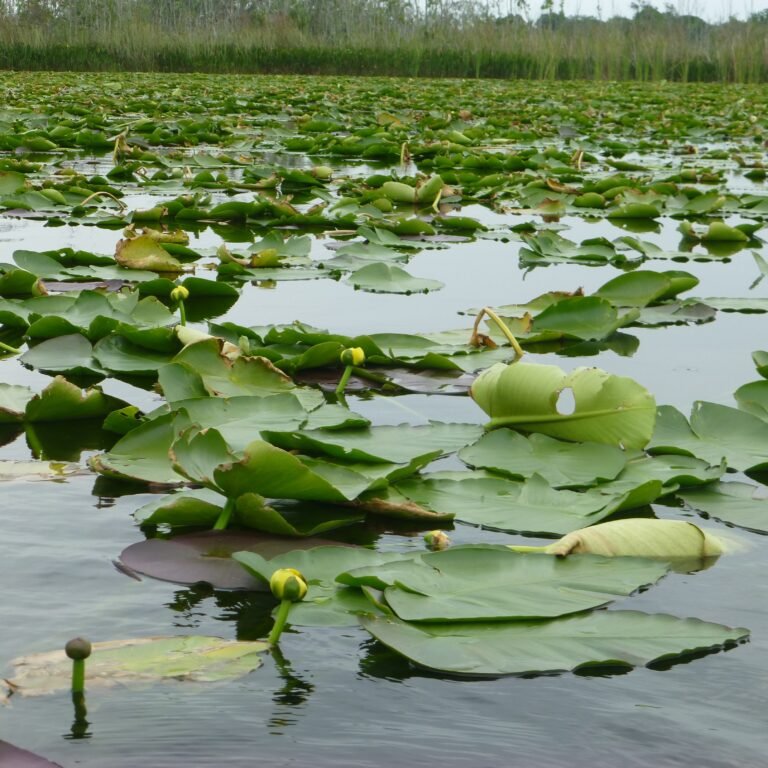
Common Names, Latin Name and Family
Spatterdock, yellow pond lily, yellow cow lily, bullhead lily, brandy bottle, and variegated yellow pond lily.
Nuphar advena subsp. advena is the most common subspecies found throughout the entire state of Florida and most of the United States.
Spatterdock is found in the Nymphaeaceae, or water lily, family of plants.
The two other native subspecies in Florida are:
Nuphar advena subsp. orbiculate is found in the panhandle only, and Nuphar advena subsp. ulvacea is only found in Escambia, Jackson, and Santa Rosa Counties.
A subspecies is a category in biological classification that ranks immediately below a species and designates a population of a particular geographic region genetically distinguishable from other such populations of the same species and capable of interbreeding successfully with them where its range overlaps theirs. [Merriam-Webster Dictionary Online]
Form
Spatterdock is an aquatic plant that grows from 6 to 10 feet in length and adapts to the water depth that it is growing in. So generally if it is growing in six feet of water it grows to that height and length.
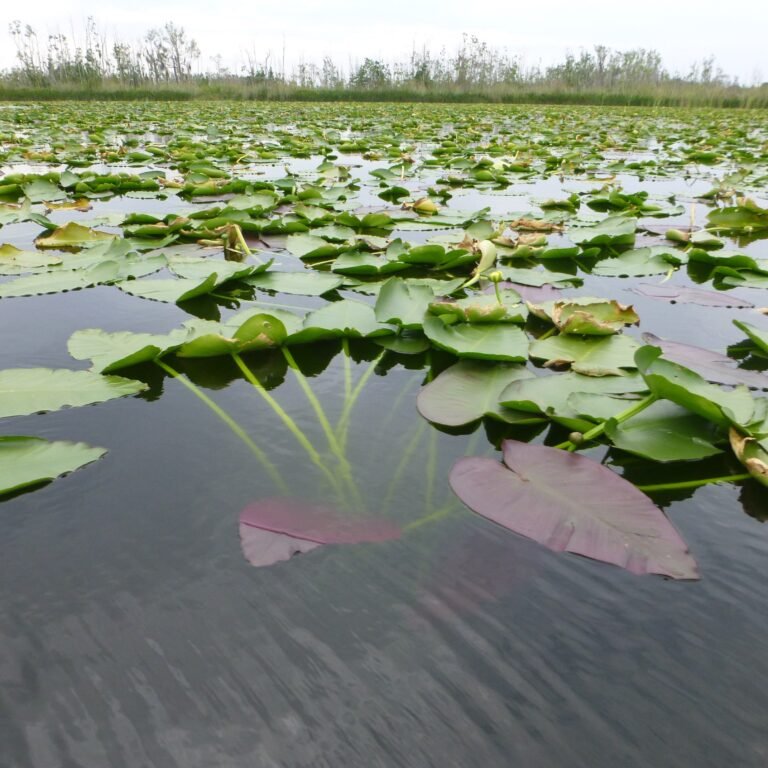
Leaves
Spatterdock leaves are very large and can be up to 10-12 inches wide and up to 16 inches long.
They are arrowhead shaped, resembling an elongated heart, with a deep V notch at the base. They can occasionally be almost round in shape. Leaf shape is varied however they are easily distinguished from water lily and lotus leaves.
Many mature leaves float on the water surface and some may stand over the water slightly.
The upper side is a deep, dark, green and the lower surface is a maroon color. Some leaves may have wavy edges, or margins, but some do not.
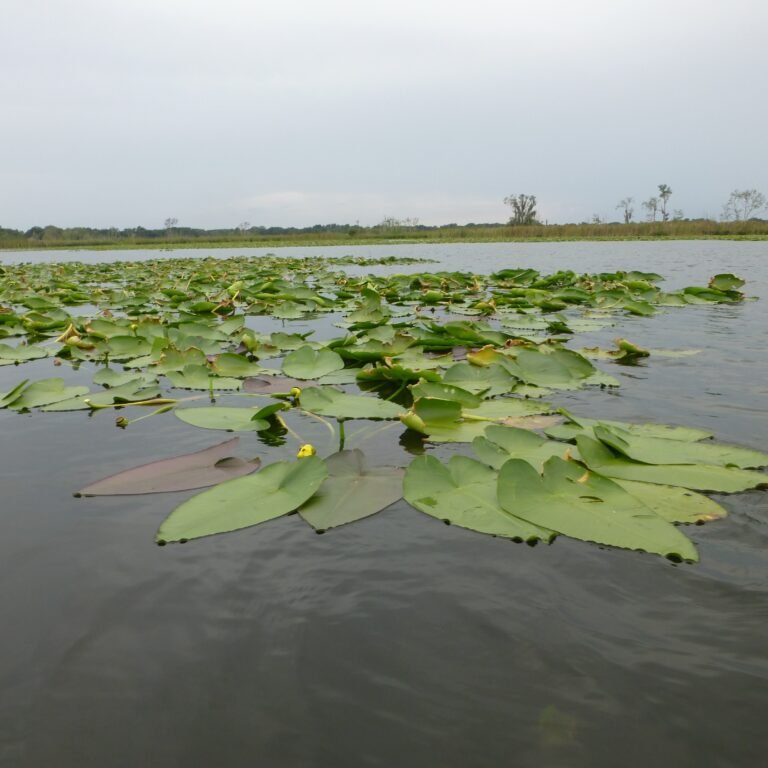
Flowers
The bright yellow flowers appear in spring, summer and fall. They are cupped shaped and never fully open.
The outer portion, at first glance, appear to be petals but are actually sepals which are modified leaves protecting the flower.
Spatterdock has six sepals. The smallest, and outermost are very green in color and the next three inside those are yellow. Inside the sepals are more petal like structures which are actually the stamens, or male parts, of the flower. The stamens are thin and numerous, and found in several rows that surround the pistil.
The pistil, or female parts, is the large disklike structure in the center. This is the part that becomes engorged, once pollinated, and produces the growing seeds. The seeds grow in elongated lateral chambers.
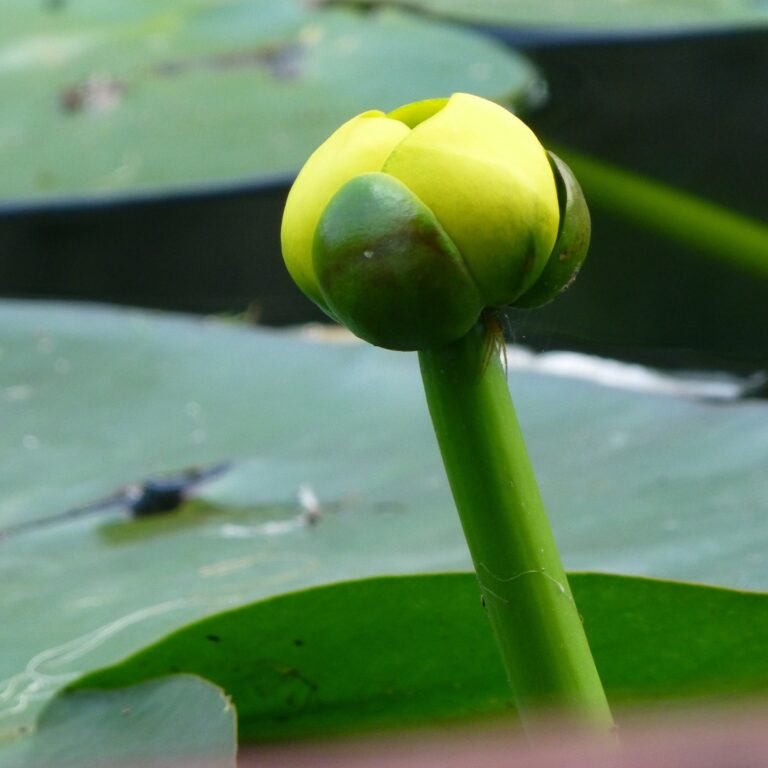
Fruit / Seeds
The seed pod of a spatterdock is a vessel shaped container with long lateral compartments, or chambers, that contain the seeds. The upper lip of the vessel has a red ring around it.
The seeds are about 2-3 mm in size and resemble little light brown pebbles once mature. They are very starchy inside so most wildlife love to eat them because they provide a great source of energy. Everything from purple gallinules to muskrats eat the seeds.
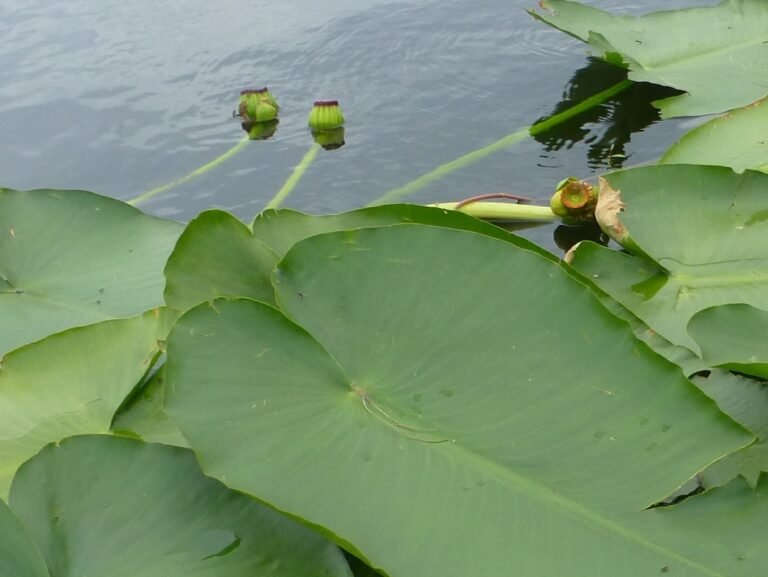
Habitat
Spatterdock occurs naturally in ponds, lakes, rivers, slow moving streams, and canals.
Native Range
It is found throughout Florida with the exception of the lower Keys
Native distribution: AL, AR, CT, DC, DE, FL, GA, IL, IN, KS, KY, LA, MD, ME, MI, MN, MO, MS, NC, NH, NJ, NY, OH, OK, PA, SC, TN, TX, VA, VT, WI, and WV. [1] see link below
[1] https://www.wildflower.org/plants/result.php?id_plant=NULUA
Landscape Use
It can be grown in any body of water. I do not have experience with growing it in containers so cannot say anything about that one way or another. However I have noticed that it’s stems stay the depth of the water it is growing in so it is very likely possible to grow in large containers, although it may outgrow the pot rather quickly because it is a large and fast growing aquatic.

Wildlife Uses
The flowers are used as a nectar source for many insects as well as a fantastic hiding place for them.
The seeds are eaten by a variety of birds and mammals. In north Florida they are eaten by beavers. In central Florida they are eaten by muskrats, many species of water ducks, and water birds such as rails, gallinules, and moorhens.
Most times the animals will start eating the seeds before they are completely ripe by breaking open the pods and picking out the seeds.
The cover that spatterdock provides, both under the water and above, provides for many animals. Under the water it provides a nursery for baby fish, a hiding place for larger fish, and a hunting ground for invertebrates like dragonfly larvae.
Above the water spatterdock provides cover for emerging dragonfly larvae to pupate and fly away, for frogs to hunt and rest, and a place for spiders to forage and live.
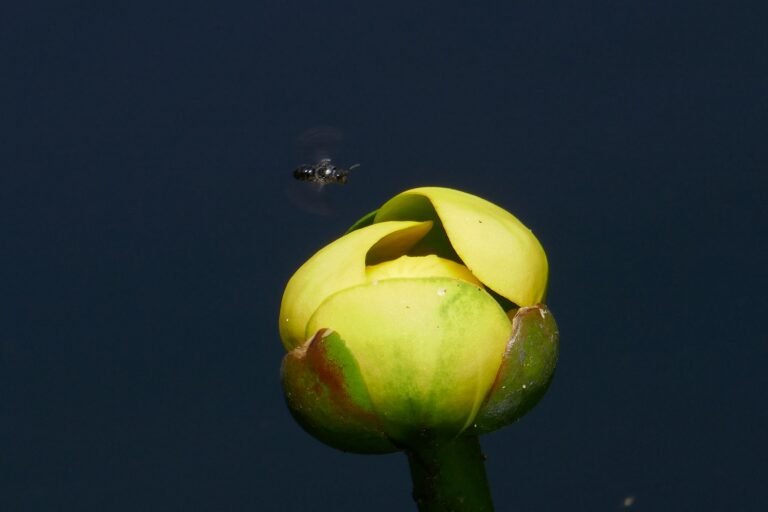
Human Uses
Plants for a Future says that the roots and seeds are edible either raw or cooked and that it has several medicinal uses.
“Root – raw or cooked[2, 62, 161, 183]. The root can be soaked in water in order to remove a bitter taste[85]. After long boiling, it has a taste like sheep’s liver[2]. The root can also be dried and ground into a powder then used as a thickener in soups, or can be added to cereal flours when making bread, cakes etc[85, 213]. Seed – raw or cooked. It can be roasted, then ground into a powder and eaten raw[213] or used to thicken soups etc[2, 62, 85, 183, 213]. The seed can also be toasted like popcorn[257].
The fresh root is anodyne, astringent and demulcent[4]. The pulverized dried rhizomes have been used to arrest bleeding[213]. A tea made from the roots is used in the treatment of dysentery, diarrhoea etc[4]. A poultice made from the roots is used in the treatment of swellings, boils, tumours, inflamed skin etc[4, 257].” [2] see link below
Propagation
It is a perennial and can be transplanted by moving the rhizomes. The rhizomes are very large, and long, covered in bumps where the leaves have been formed and then dropped off. The rhizome is about 6-8 across and grows many feet in length depending upon whether or not the parent plant’s rhizomes were damaged and separated from the original. The rhizomes grow in a matted mass in the lake bottom with nearby plant’s rhizomes overlapping the next.
Although it is difficult to get them out of the lake bottom in deep water it can be done fairly easily in shallow water. Sometimes the current will uproot them and those are easily pulled out by hand because they are already partially lifted.
If pieces are broken off they may produce new roots so don’t throw them out, but put them in the soil in the bottom of your pond, or lake, and see if they will recover and grow because it is a very hardy aquatic.
Growing from seeds is problematic because they need to be relatively fresh seeds and they need three months of cold stratification and even then the germination rate is not very high.